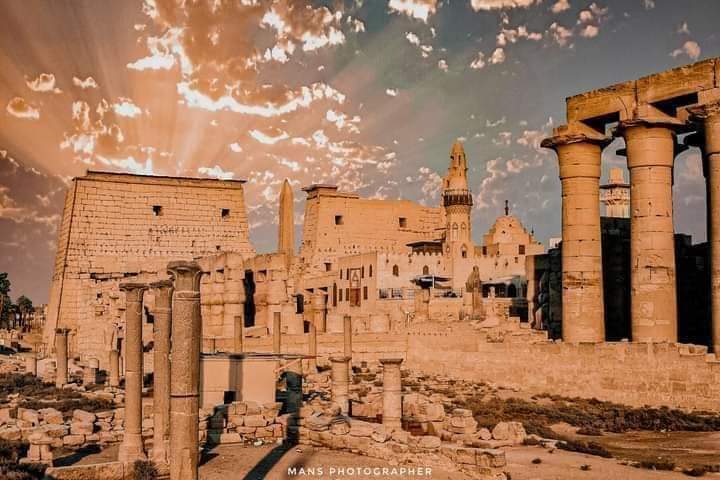🏛️ Luxor Temple – A Masterpiece on the Banks of the Nile
📍 A Monument in the Heart of Egypt
Located in the heart of modern-day Luxor, on the east bank of the Nile River, Luxor Temple stands as one of Egypt’s most majestic and historically significant monuments. Unlike many ancient Egyptian temples built to honor gods, this one was primarily dedicated to the concept of divine kingship. It served as a ceremonial center for coronations and symbolized the Pharaoh’s divine connection with the gods.
📜 Historical Background
Luxor Temple dates back to around 1400 BCE, during the New Kingdom. It was originally commissioned by Pharaoh Amenhotep III of the 18th Dynasty and later expanded by Ramses II, one of Egypt’s most powerful rulers. Over time, rulers such as Tutankhamun, Alexander the Great, and Roman emperors added their own touches—making the temple a living archive of over 3,000 years of history.
🏗️ Architectural Wonders
Luxor Temple is a stunning example of ancient Egyptian architecture and symbolism:
-
First Pylon: Built by Ramses II, this monumental gateway is adorned with carvings of battles and religious scenes. It was once flanked by six colossal statues of the Pharaoh (two remain today) and two obelisks—one of which now stands at Place de la Concorde in Paris.
-
Courtyard of Ramses II: An open courtyard surrounded by papyrus-shaped columns and decorated with scenes of rituals and military victories.
-
Colonnade of Amenhotep III: A magnificent avenue lined with 14 towering columns, each over 16 meters high, leading into the inner chambers.
-
Sanctuary and Inner Rooms: These sacred spaces housed the barque (boat) of the god Amun and were used in religious rituals.
🙏 Religious Importance
Luxor Temple was dedicated to the Theban Triad—Amun-Ra, his consort Mut, and their son Khonsu. It played a central role in the annual Opet Festival, one of ancient Egypt’s most important religious celebrations. During the festival, statues of the gods were transported from Karnak Temple to Luxor Temple in a grand procession, symbolizing the renewal of the Pharaoh’s divine power.
🕰️ A Living Monument Through the Ages
What makes Luxor Temple truly special is its continuous use through different eras:
-
Pharaonic Era: Used for royal and religious ceremonies.
-
Greco-Roman Period: Transformed into a Roman military camp.
-
Christian Period: The hypostyle hall was turned into a church.
-
Islamic Era: The Abu El-Haggag Mosque was built on the temple site and is still in use today.
🌙 A Magical Night-Time Experience
Today, visitors can experience the temple in a whole new light—literally. At night, the monument is beautifully illuminated, showcasing its intricate carvings and soaring columns in a breathtaking display. It’s an unforgettable way to step back into the world of the Pharaohs.
🚶♂️ Location and Accessibility
Situated in central Luxor, the temple is easily accessible and is often visited along with the Karnak Temple, located just 3 kilometers to the north. The two are connected by the Avenue of Sphinxes, an ancient ceremonial path lined with hundreds of ram-headed and human-headed sphinx statues.
📖 A Story Etched in Stone
Luxor Temple is more than just a monument; it’s a stone-carved storybook that tells the tale of Egypt’s religious, political, and cultural evolution.
Its unique blend of ancient grandeur and living history makes it an essential destination for anyone visiting Luxor.


